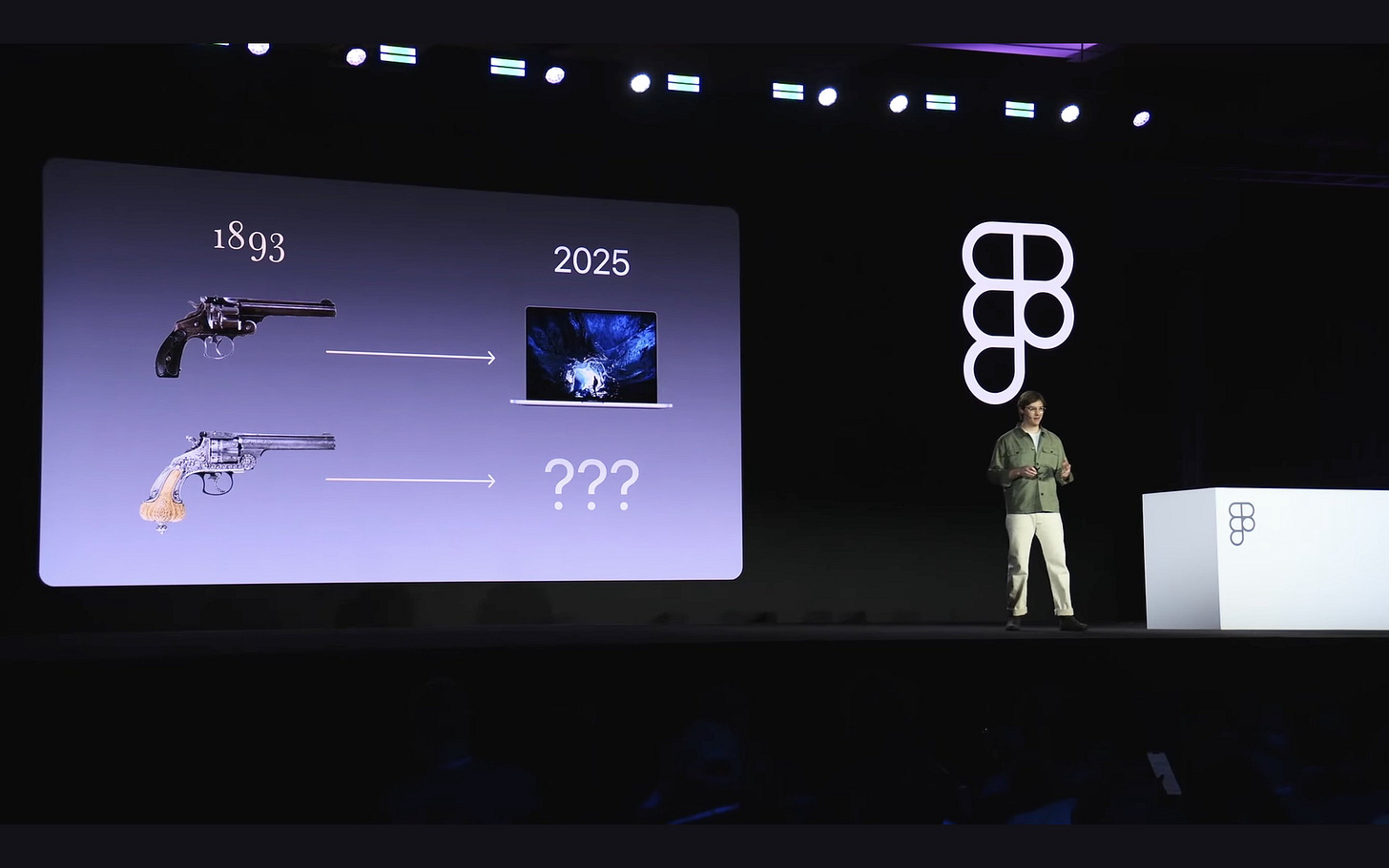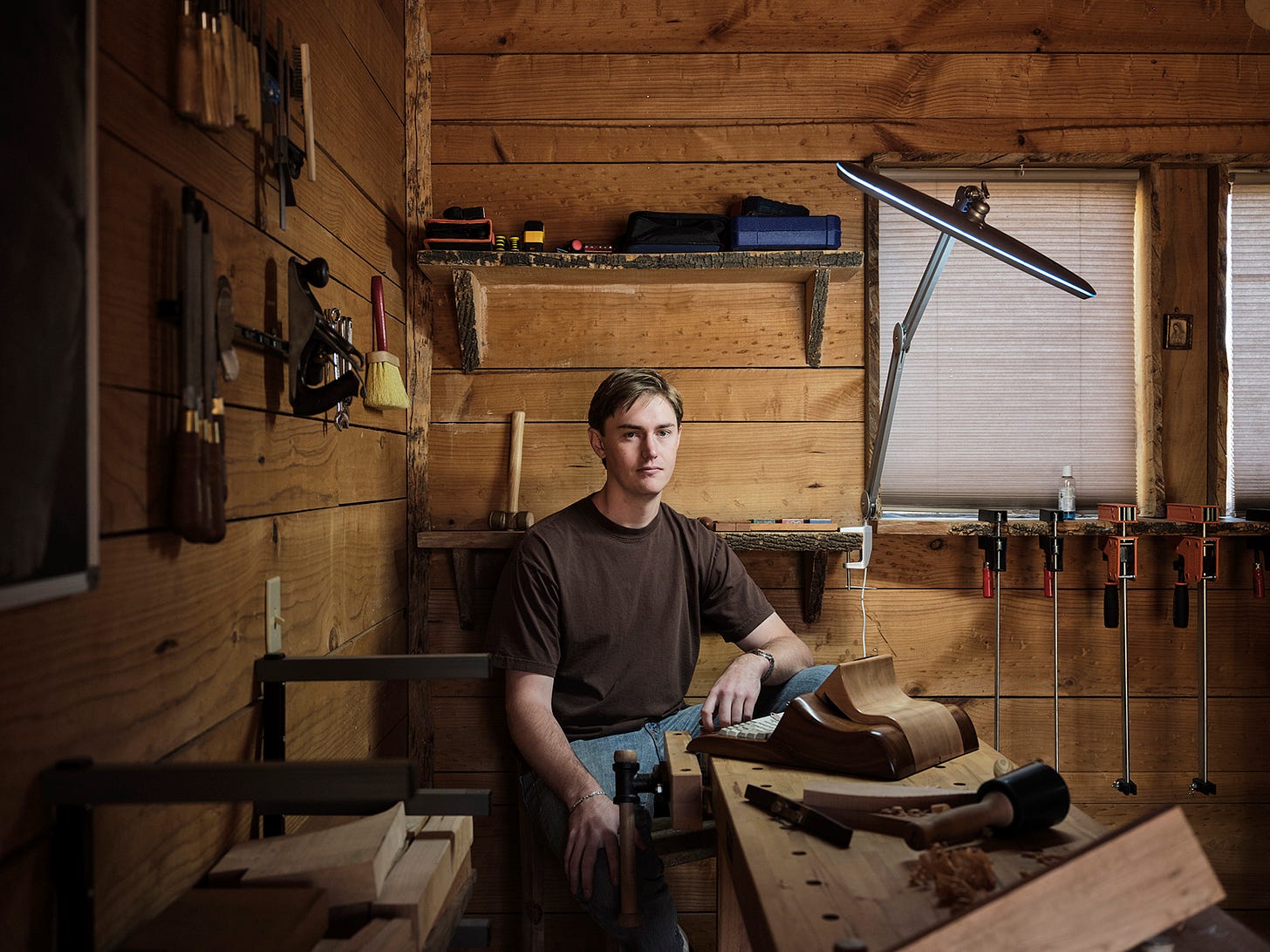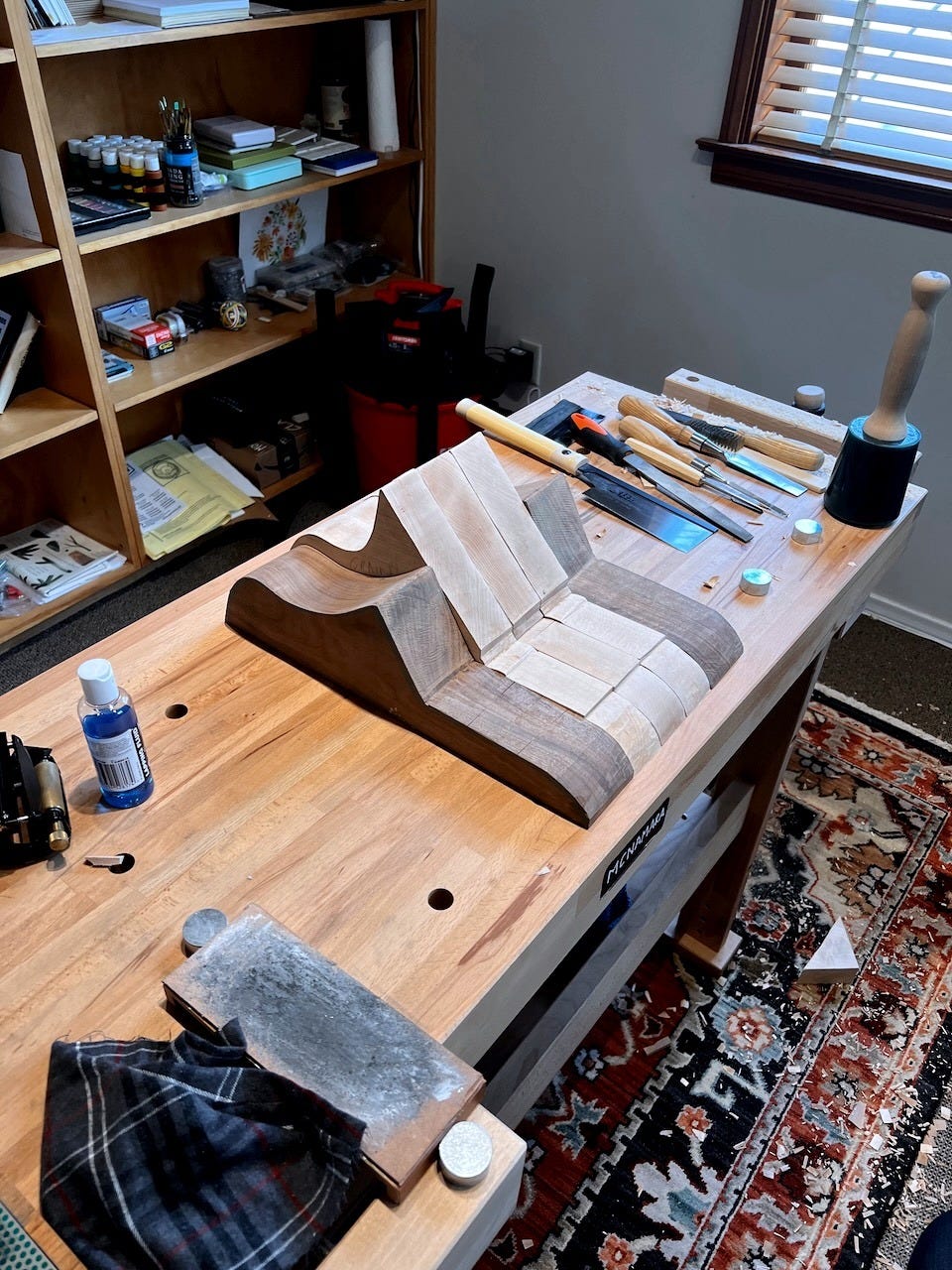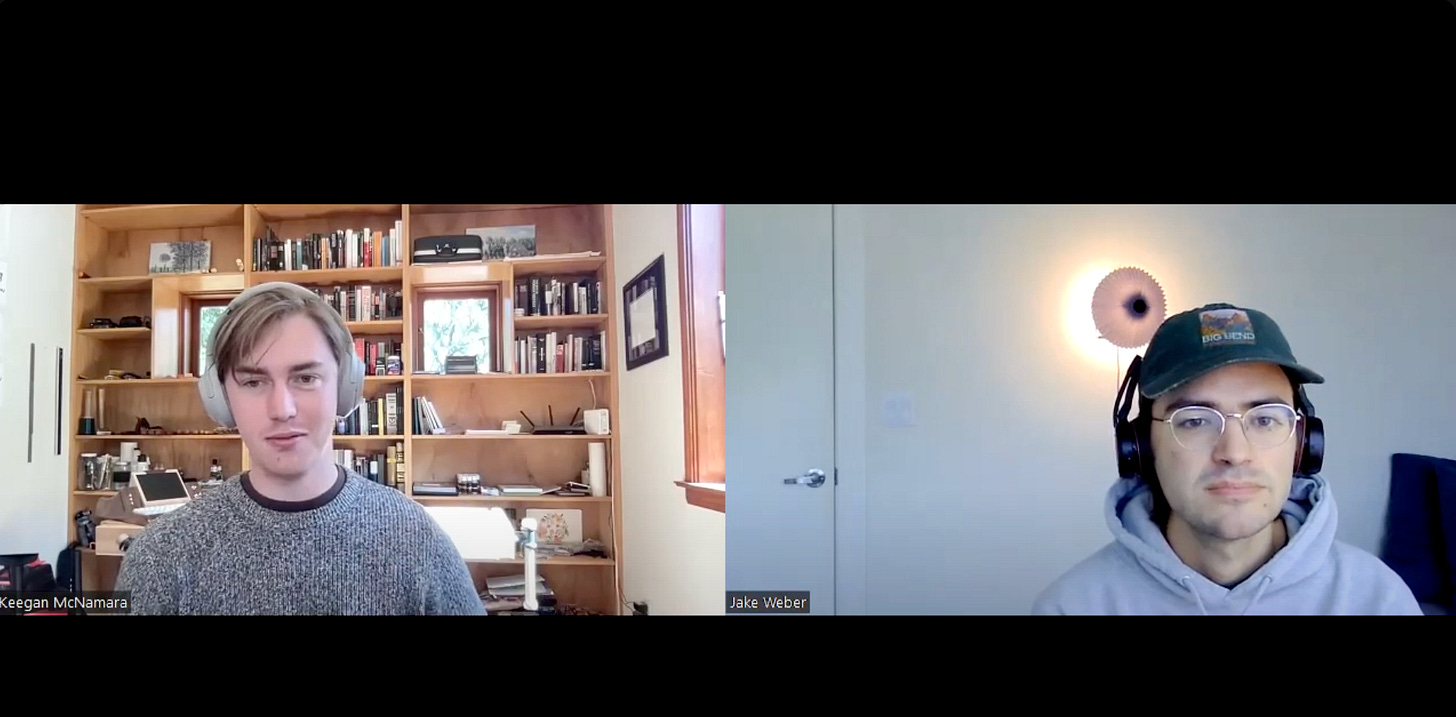Why are our computers so ugly now?
Introducing good_work through an interview with Keegan McNamara
Where did the ornament go?
This is a question Keegan McNamara has had in mind since roaming around the “Arms and Armor” exhibit at the MET over three years ago.
Keegan wanted a computer as beautiful as the 19th century firearms on display at the MET. A piece of technology that was in many ways, a counterweight to the seamless industrial aluminium and glass that Apple has made so pervasive.
So he built one himself, by hand. He started with clay, made dozens of scale prototypes, carved the wooden bodies of those first versions, hacked together the hardware needed, and wrote the software for the first Mythic computer. The result was a fully functional, intentionally simple, ornate machine as beautiful as the firearms Tiffany & Co. would design in the 1800s.
Many people saw that first machine and thought it beautiful and as a result Keegan now works full time building custom personal computers from his studio in Ojai California. How wonderful is that? For a person who finds it easier to relate to a luthier than an entrepreneur, it’s pretty great.
Keegan and I first spoke nearly two years ago, when I was beginning to sketch out a project I’d been mulling over even longer. The idea was to meet and talk with independent designers, programmers, and inventors like Keegan who are doing good, novel work in pursuit of their own creative vision. People who aren’t necessarily backed by VC money or building another B2B SaaS app, who are removed from the “scenesters” and Twitter hype cycles, and are navigating the difficult and rewarding process of trying to do good work for a living. I’ve spoken to brilliant industrial designers, engineers, interaction designers and programmers, and independent publishers.
Keegan embodies this type of person and I am proud to present our conversation as the first in a series of seven that will make up “season one” of good work, a podcast project focused on people doing the “good kind of work”, rather than the other kind which is far more common and a lot less fun.
You can listen to the first explorative conversation, with Keegan McNamara, below.
If you want to go deep on Keegan’s work, here are a few trailheads I’d recommend:





